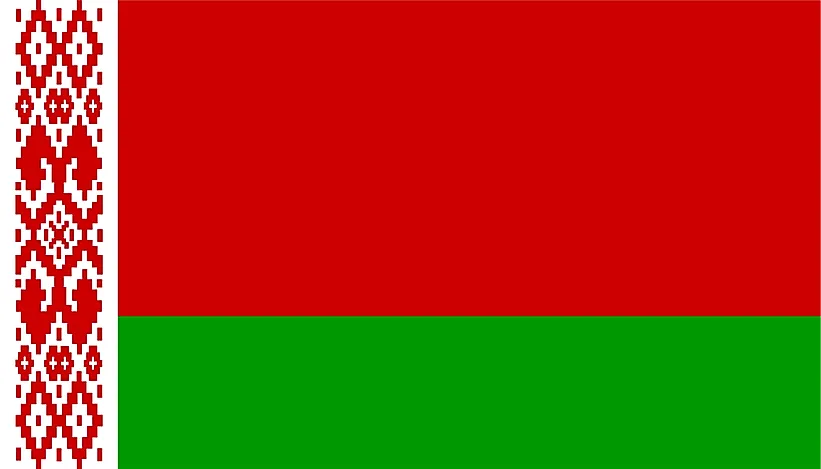
ベラルーシ
| 大陸 | ヨーロッパ |
| 資本金 | ミンスク |
| 人口 | 9,570,376 |
| GDP | $166億円 |
| 一人当たりGDP | $17,500 |
| ダイヤルコード | +375 |
| ISOコード(2文字) | バイ |
| ISOコード(3文字) | ビーエルアール |
ベラルーシ 風景






ベラルーシについて
ベラルーシへようこそ。東ヨーロッパの中心に位置するベラルーシは、手つかずの森、古くからの伝統、そして豊かな文化遺産に恵まれた土地です。207,600平方キロメートルに約940万人の人口を擁するベラルーシは、ソビエト連邦の遺産と独特の国民性を併せ持ち、歴史的な深みと近代的な発展がユニークに融合しています。数多くの湖や川があることから「青い目の国」として知られるベラルーシは、あまり探検されていないヨーロッパの一角を垣間見ることができる。
地理的特徴と自然の美しさ
ベラルーシの地理はなだらかな地形が特徴で、広大な平原と高地に多数の湖、河川、森林が点在している。地形は平地から丘陵地が多く、最高地点は海抜345メートルのジヤルジンスカヤ・ハラである。
かつてヨーロッパ平原に広がっていた原生林の一部で、ヨーロッパ最古かつ最大級の規模を誇るベラヴェシュスカヤ・プーシチャは、ユネスコの世界遺産に登録されており、希少なヨーロッパバイソンの生息地でもある。ドニエプル川、ドヴィナ川、プリピャチ川など、数多くの湖や川があることから、"湖の国 "と呼ばれている。
ヨーロッパ最大の湿地帯であるプリピャチ湿原は、多様な野生動植物を支える独自の生態系を形成している。この地域の特徴的な景観は、氷河期の活動によって形成され、その結果、何千もの湖となだらかな起伏のある丘ができました。
文化遺産と伝統
ベラルーシの文化は、スラブ文化とバルト文化の両方の影響を受けた、東欧の伝統の豊かなタペストリーを表しています。特に農村部では、古くからの風習、工芸、祝祭が日常生活で重要な役割を果たし続けている。
ベラルーシの伝統芸術には、複雑なわら細工、陶器、織物工芸、特にラシュニク(精巧な刺繍が施された儀式用のタオル)などがある。ベラルーシの音楽遺産には、独特の民謡や踊りがあり、シンバリー(ハンマー・ダルシマー)などの楽器が中心的な役割を果たしている。
ベラルーシ料理はこの国の農業遺産を反映しており、ドラニキ(ジャガイモのパンケーキ)、バブカ(焼きジャガイモのプリン)、様々な種類の具だくさんのスープなどの料理がある。クパレ(真夏の祭り)やマスレニツァ(春の祭り)といった伝統的な祭りは、今でも重要な文化行事となっている。
歴史の旅
ベラルーシの歴史は、中世のポロツク公国やリトアニア大公国を経て、古代スラブ人の居住地から、ロシア帝国やソビエト連邦での役割にまで及んでいる。ベラルーシは、歴史を通じて文化と勢力の交差点であり、その発展と国民性に影響を与えてきた。
第二次世界大戦では、人口の約4分の1を失うという大きな被害を経験した。この時期は国民の意識に深く影響を与え、国中にある数多くの記念碑や博物館で記念されている。
1991年のソビエト連邦解体後、ベラルーシは独立し、ロシアとの緊密な関係を保ちながら、独自の発展の道を歩んできた。
現代の経済状況
今日のベラルーシは、重要な工業・農業部門を擁しながら、ほぼ国営経済を維持している。ベラルーシは製造業、特に機械、化学、繊維の分野で知られている。IT部門は、ミンスクのハイテクパークが重要な技術拠点となるなど、経済の明るいスポットとして浮上している。
農業は依然として重要で、乳製品、ジャガイモ、亜麻の主要生産国である。ベラルーシはまた、重機械製造、特に鉱山機械やトラクターの製造でも大きな専門技術を培ってきた。
国際関係とグローバルポジション
ベラルーシはロシアとの強い結びつきを維持する一方で、他国との関係のバランスを図っている。独立国家共同体(CIS)やユーラシア経済連合など、さまざまな国際機関や地域連合に加盟している。
ご存知でしたか?
- ベラヴェジスカヤ・プーシチャは、ヨーロッパ最大の野生のヨーロッパバイソンの生息地なのですか?
- ベラルーシは世界有数のカリ肥料生産国ですか?
- 首都ミンスクは第二次世界大戦後にほぼ完全に再建され、その結果、独特のソビエト・モダニズム建築が生まれた。
- ミンスクにあるベラルーシ国立図書館は世界最大級で、ユニークな菱形八面体の形をしている。
結論
ベラルーシは、東ヨーロッパにおける歴史的遺産と近代的発展のユニークな融合を象徴しています。手付かずの森林から産業の成果まで、民俗的伝統から新興のテクノロジー分野まで、ベラルーシはヨーロッパの文化と社会に関する独特な視点を観光客に提供しています。ベラルーシは、21世紀の挑戦をナビゲートするように、変化する世界情勢に適応しながら、そのユニークなアイデンティティを維持し続けています。